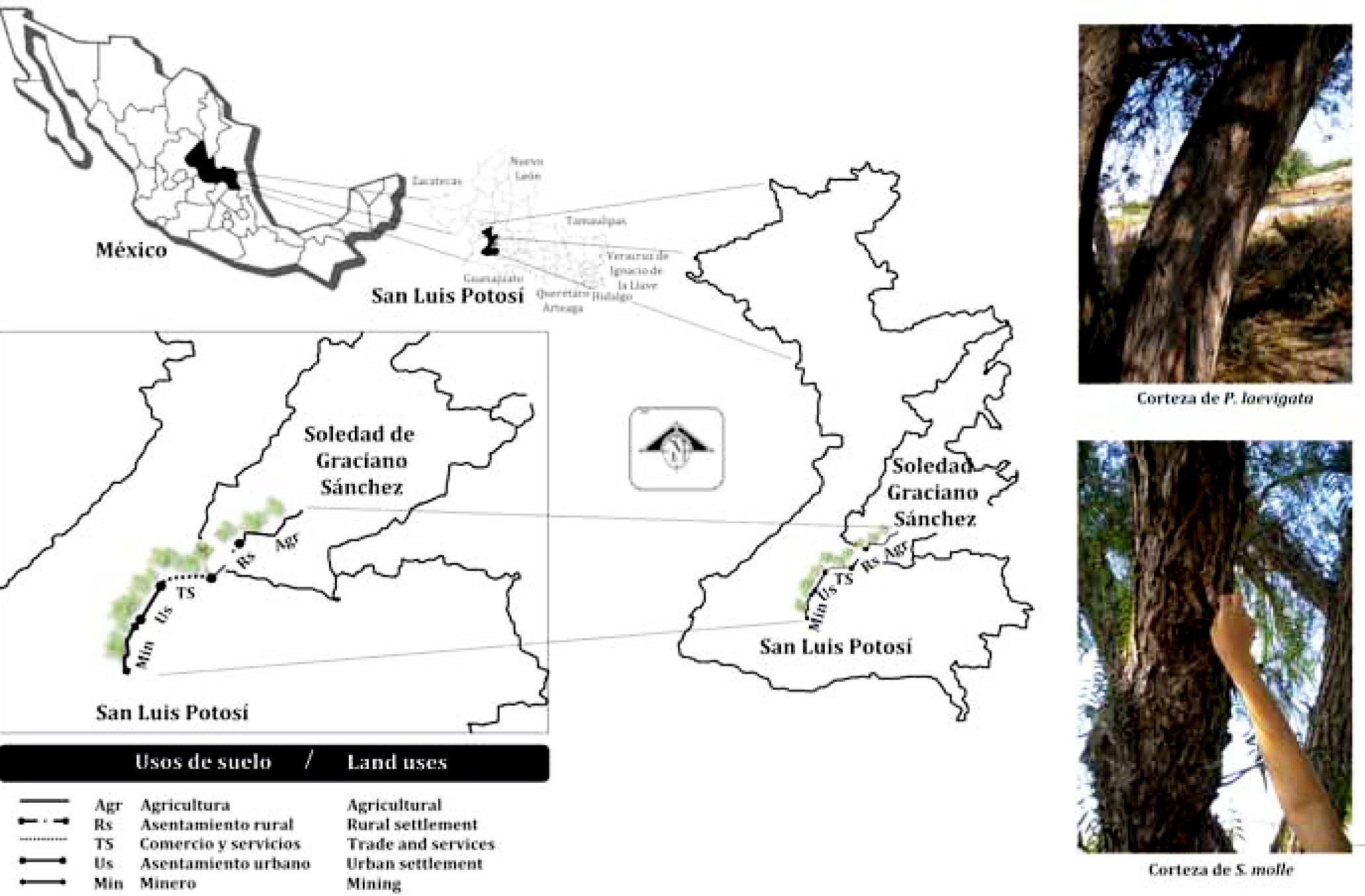Bark of P. laevigata (Fabaceae) and S. molle (Anacardiaceae) as bioindicator of heavy metal contamination
Keywords:
pollution, land use, season, environmental impactAbstract
The tree bark is a valuable component to diagnose heavy metal air pollution. In bark of P. laevigata and S. molle presence of eleven heavy metals was evaluated, as indicator of environmental impact in San Luis Potosí, México. Based on the presence of both species on a soil system fragmented agricultural uses, rural settlements, trade and services, urban settlements and mineral uses, bark samples were taken during summer, autumn, winter and spring seasons. In each species thirty exemplars were sampled. Concentrations of Al, As, Co, Cu, Cd, Cr, Ni, Pb, Ti, V and Zn were determined by applying the ICP-MS technique, and for data analysis the General lineal model was applied. Results indicated that the average concentrations vary according to Ni> Al> Zn> Pb > Cu> As> Ti> V> Cd> Cr> Co. The presence of heavy metals was determined by the species effect, land use and season, and the relationship between these factors. The pepper tree bark was found to have higher concentrations of Al, As, Co, Cd, Cr, Ni, Pb and Ti. The highest concentrations of Al, Cu, Cr, Co and Ni were in the fall season. The urban settlement showed higher concentrations of Al, Co, Cr, Ni, Ti and V; meanwhile in the mining soil use Cu, Cd, Zn and Pb were relevant. The potential bio-indicator value of bark of both species was evidenced. Consequently, it is convenient to continue with these studies to increase knowledge of the environmental conditions of the San Luis Potosí.

Downloads
Published
Issue
Section
License
Aquellos autores/as que tengan publicaciones con esta revista, aceptan las Políticas Editoriales.


